Yellowstone Owes Its Early Success To Public Bear Feeding
Nightly garbage feedings, roadside gangster bears, and a public “Bear Lunch Counter” were a deliberate strategy to help set the park apart.

The bear “Lunch Counter” behind Old Faithful. (Photo: Yellowstone National Park/Public Domain)
When F. Dumont Smith visited Yellowstone National Park’s Lake Hotel in 1909, he came away with a few grievances. The boat meant to take him across the lake was late. He didn’t manage to catch any trout on his fishing excursion. Other tourists were slow and loud.
And then there was the final straw, much worse than any of these: When it came time for the nightly bear-feeding bonanza, he and his girlfriend didn’t get to ride in the hotel’s garbage cart. Instead, they and most of the other guests were forced to stand back with their cameras as an employee dumped buckets of the day’s trash in a field, drawing a crowd of hungry black bears and grizzlies.
“The cart drives right out among the bears,” Smith later wrote, glumly. “How they got that garbage cart privilege, I never found out—made love to the scullion, I suppose.” His girlfriend, too, was mad: “She would rather have sat on [that] swill-can than with kings, emperors and potentates.”

A couple of lucky people who did get to ride on the garbage cart. (Photo: National Park Service/Public Domain)
Today, a garbage-strewn bear encounter behind a hotel would mark a bad day for a National Park visitor. But back in Yellowstone’s early days, tourists took such encounters for granted, and the park did very little to discourage this. In fact, as historian Alice Wondrak Biel explains in Do (Not) Feed The Bears: The Fitful History of Wildlife and Tourists in Yellowstone, they banked on it—building elaborate “bear show” pits, failing to enforce the park’s no-feeding rules, and tacitly encouraging the many black bears who roamed the roads, “holding up” cars for food.
Today, it’s strange to think of having to sell the idea of Yellowstone to anyone. But back when the park first opened, it needed to justify itself. Here was an enormous swath of prime Western land, set aside only for pleasure and recreation, paid for with American tax dollars. It sank or swam based on public opinion. For it to survive, people had to come, and they had to have the kind of good time they couldn’t get anywhere else.
The park’s superintendents were busy building infrastructure in the institution’s first few decades, fighting poachers, and encouraging trains to come near enough that visitors could actually visit. But things improved, and when conservationist Horace Albright took the helm in 1919, he began turning human-animal interaction into a deliberate priority. The National Park Service, he said, had “a duty to present wildlife as a spectacle” for parkgoers.

Horace Albright dines with some bear friends in 1922. (Photo: National Park Service/Public Domain)
He built a seasonal buffalo corral, and stocked it every summer with 15 of the park’s handsomest bulls. He had rangers culled animals, like coyotes, that ate the more beloved species. At least two actual zoos sprung up within the park, so that visitors could get a good look at deer and badgers without all that pesky land in the way.
Perhaps most importantly, he added flair to the bear shows. What had started as a convenient garbage disposal method became, under Albright’s leadership, a full-on attraction. The dump outside Old Faithful got a feeding platform, a safety ditch, wooden benches for spectators, and a sign that said “Lunch Counter for Bears.” (A 1920 hotel brochure promised you could “photograph a wild bear and eat a course dinner in the same hour.”) Every night at dinnertime, a ranger named Philip Martindale would mount his horse, slowly back it up until it was a mere 30 feet from the feeding frenzy, and lecture on the bears’ biology, habits, and family life.
An even larger feeding ground, outside the Canyon Hotel, boasted a huge concrete platform and log bleachers set up on the surrounding hill. “This arrangement created a sort of theater space,” writes Biel, “in which the bears emerged as if from the wings… in order to perform their own Shakesbeare in the Park for the assembled audience.” It drew 50 to 70 fuzzy thespians every night, and the bleachers were so stuffed as to be standing room only.
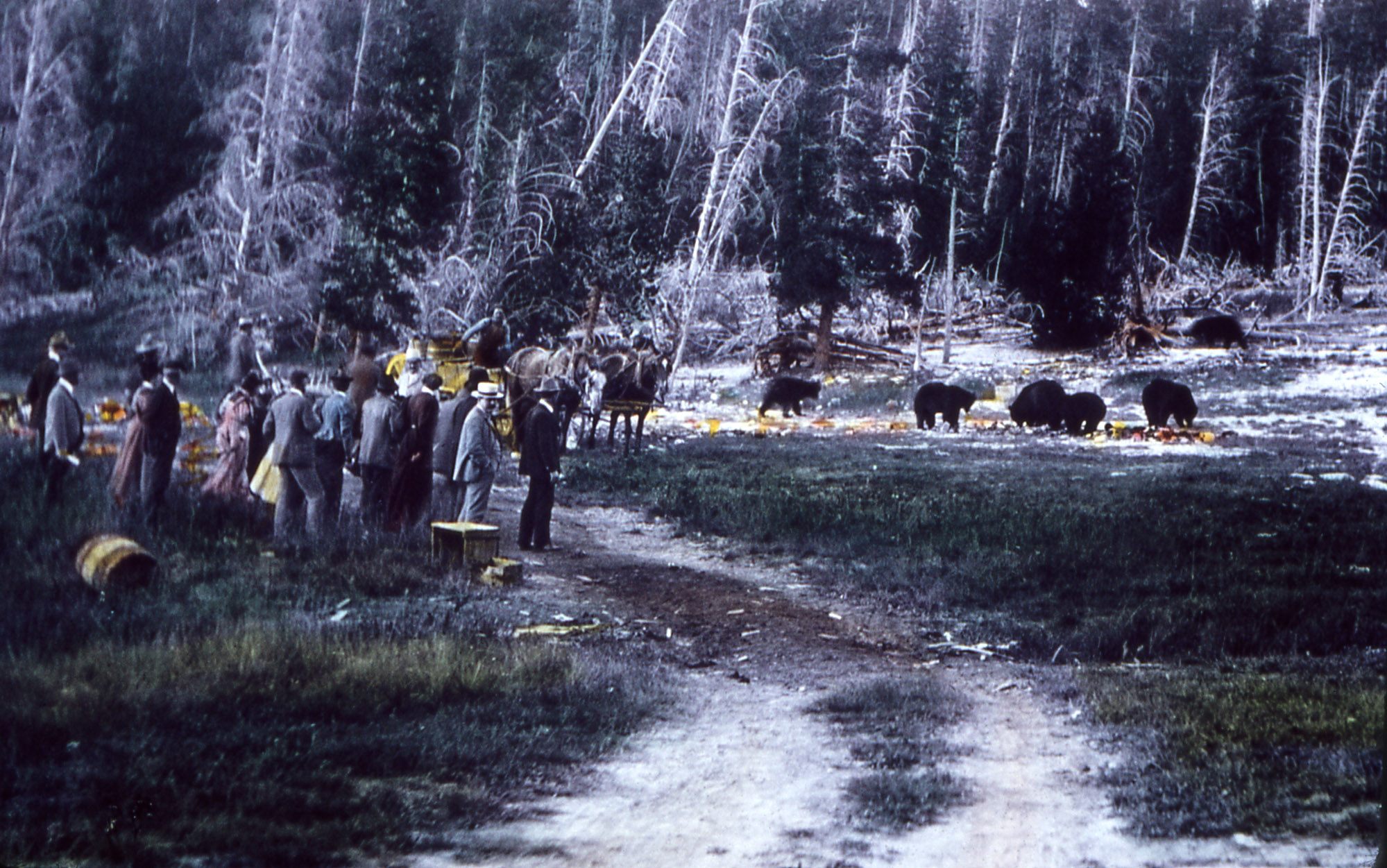
Hotel guests watch bears eat trash in the early 1900s. (Photo: National Park Service/Public Domain)
The shows were so beloved that they achieved a kind of meta-popularity: the crowds became an attraction in and of themselves. In 1929, the park’s chief ranger estimated that 90 percent of visitors had visited the Lunch Counter. “The excitement of the audience caused by the appearance of a big old grizzly among a group of hungry black bears is worth going a long way to see,” Albright told the New York Times in 1931.
As Biel explains, this situation was a triple-win for the park: the people were happy, the garbage went away, and the bears steered clear of dicier food supplies, like human provisions, cute elk, and artificially stocked trout. As Albright himself put it in his book, Oh, Ranger!, “Mr. Bear knows he can eat a lot more in an eight-hour day if he eats ‘combination salad’ at the bear pits than he can if he nibbles at tidbits stolen from campers.”
But the bears soon took matters into their own paws. In 1915, Yellowstone began letting cars into the park. The bears quickly realized that these metal receptacles were, like garbage cans, chock full of treats, and that the best way to get them out was to block the road, preventing the drivers from going further until food was proffered. Martindale once caught a mother bear repeatedly nudging her cub into the middle of the road until he got the knack of begging.
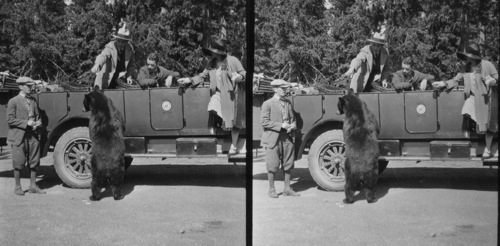
Calvin Coolidge and family, feeding famous Hold-Up Bear Jesse James in 1927. (Photo: Online Archive of California/Public Domain)
These “Hold-Up Bears” snarled traffic, ambling from car to car and demanding tribute from guests. “The public, ensemble performances of the feeding grounds were replaced by private table dances,” writes Biel. Visitors happily paid for the privilege, usually in candy.
Once again, Albright saw very little wrong with this. Although hand-feeding bears was technically against the rules, it was also another way to bring guests that authentic, all-American experience they could only get at Yellowstone. When statesmen came through the park, he made sure to take them on bear-feeding excursions. In 1923, he had rangers tree a couple of hungry bears, so that Warren G. Harding could coax them back down with molasses. Four years later, the Coolidge family arranged a photo op with the most famous Hold-Up Bear, Jesse James.
With all this interspecies snacking, someone was bound to get hurt. In those early decades, people got scratched, bitten, and bowled over, and at least one, a park employee named Frank Welch, was killed by a grizzly. Bears also suffered: so-called “bad actors” would be shot or shipped to zoos. Albright, for the most part, brushed this off, blaming bad results on people’s “foolish behavior.” A scar, he would say, makes a great souvenir.
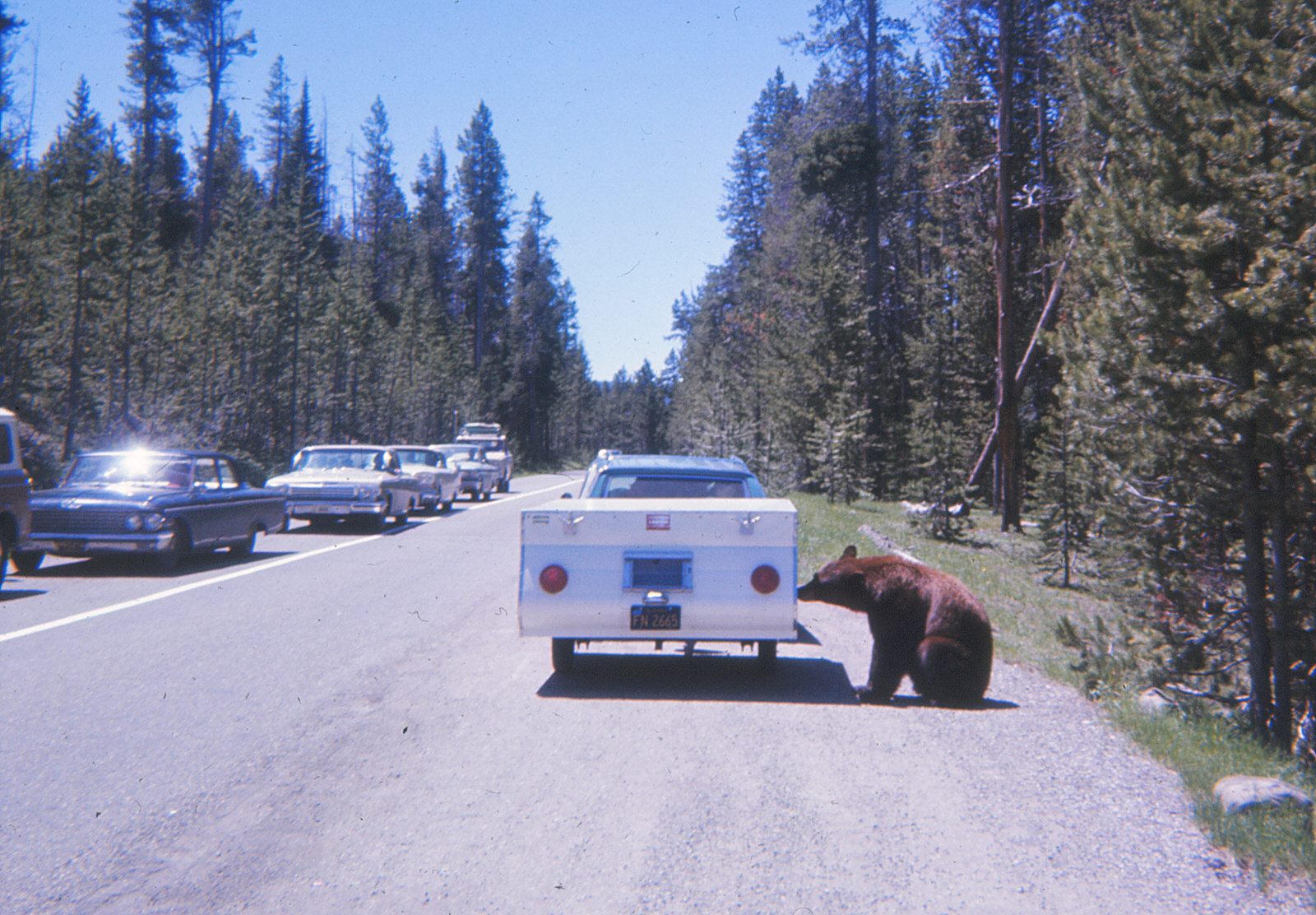
A Yellowstone bear sniffs at a trailer in 1967. (Photo: Jonathan Schilling/CC BY-SA 3.0)
In 1929, Albright left Yellowstone to become director of the whole National Park Service. His successors, slightly less sold on the wisdom of enabling wildlife encounters, began to slowly phase out bear-feeding. Park biologists submitted new guidelines for the park, predicated on the idea that “every species… be left to carry on its struggle for existence unaided.” World War II and its attendant shortages gave those in charge the opportunity they needed to shut down the Lunch Counter, and the other bear shows. Albright never quite agreed with the strategy change. “An argument can be made for such policies,” he later wrote, “but the [guests]—and the bears, too—will be hard to convince.”
He was correct—it took several more decades for people to stop dangling Twinkies out of their windows. But eventually, decades of science and education, and a new bear management plan, paid off. By the time Biel herself was spending time in Yellowstone, in the 1970s and ’80s, she says, she never saw a roadside bear. “My parents always taught me to respect wildlife as being wild,” she says. “I never wanted to get close.”
Today, “bear jams” are a rarity, and bears eat fish and plants, not garbage. All the lunch counters are specifically for people. And the most famous recent gangster bear was named, not Jesse James, but Scarface—much more fitting for one of the world’s wilder places.
Naturecultures is a weekly column that explores the changing relationships between humanity and wilder things. Have something you want covered (or uncovered)? Send tips to cara@atlasobscura.com.


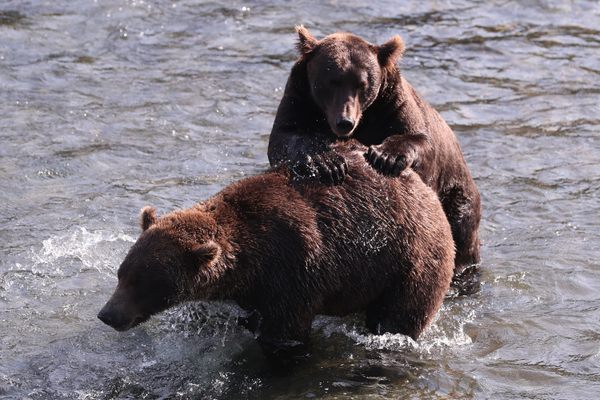
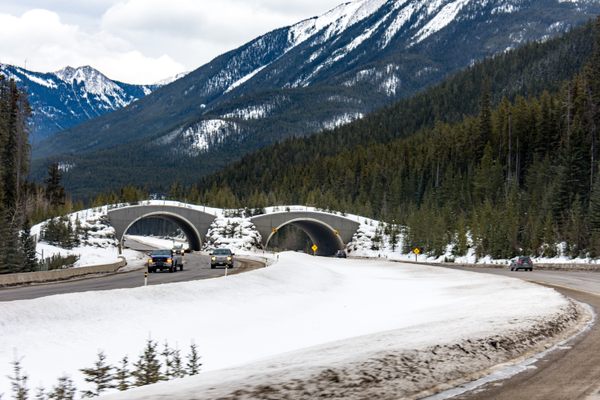






Follow us on Twitter to get the latest on the world's hidden wonders.
Like us on Facebook to get the latest on the world's hidden wonders.
Follow us on Twitter Like us on Facebook